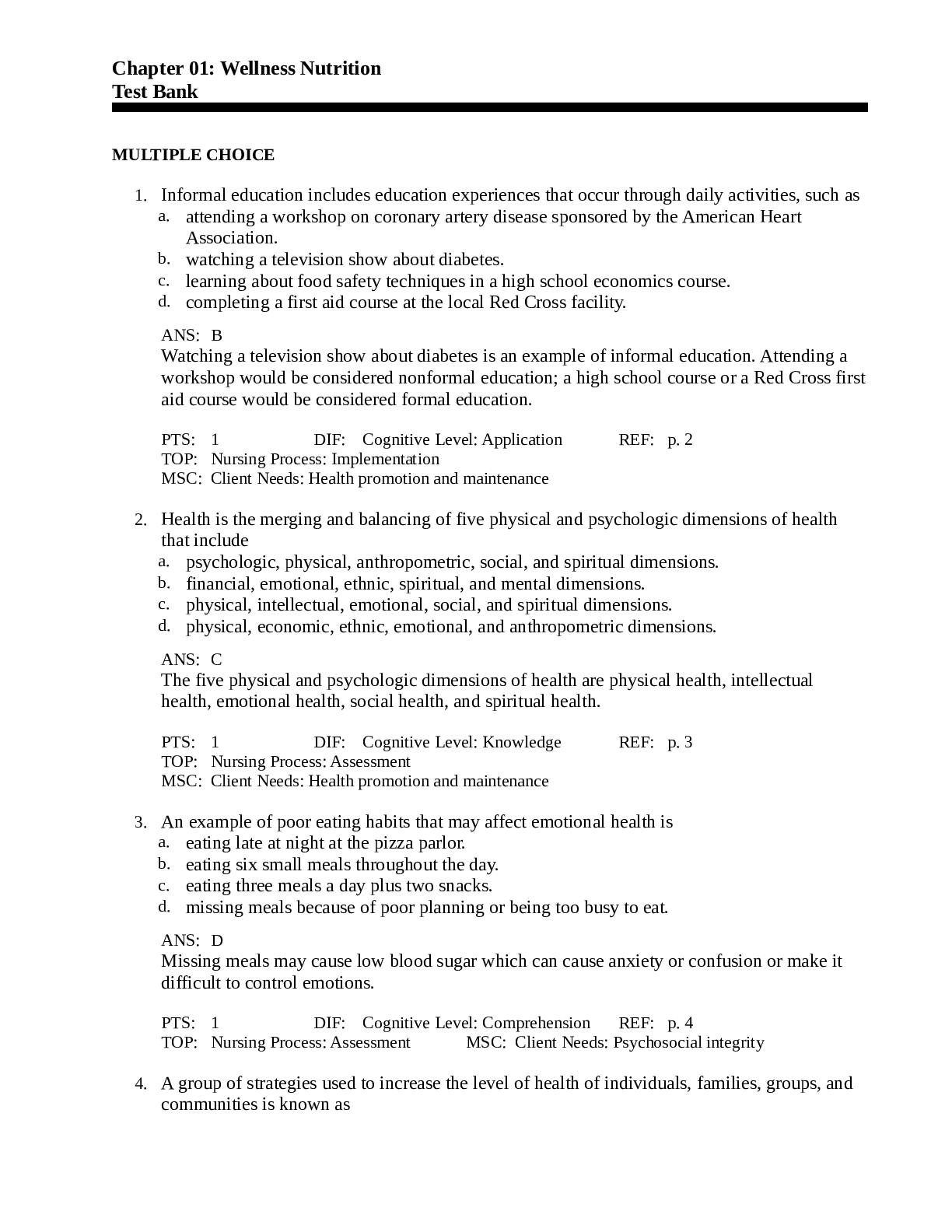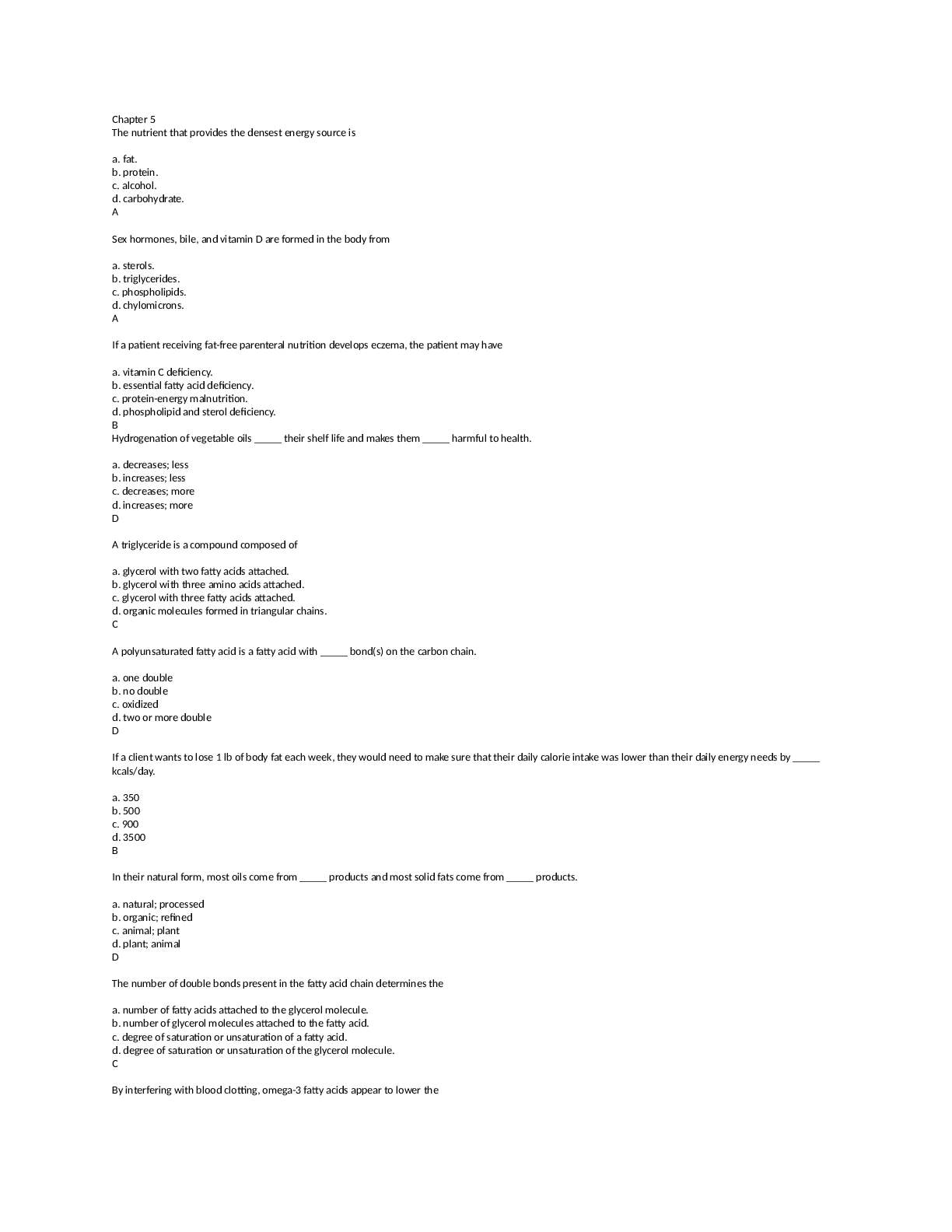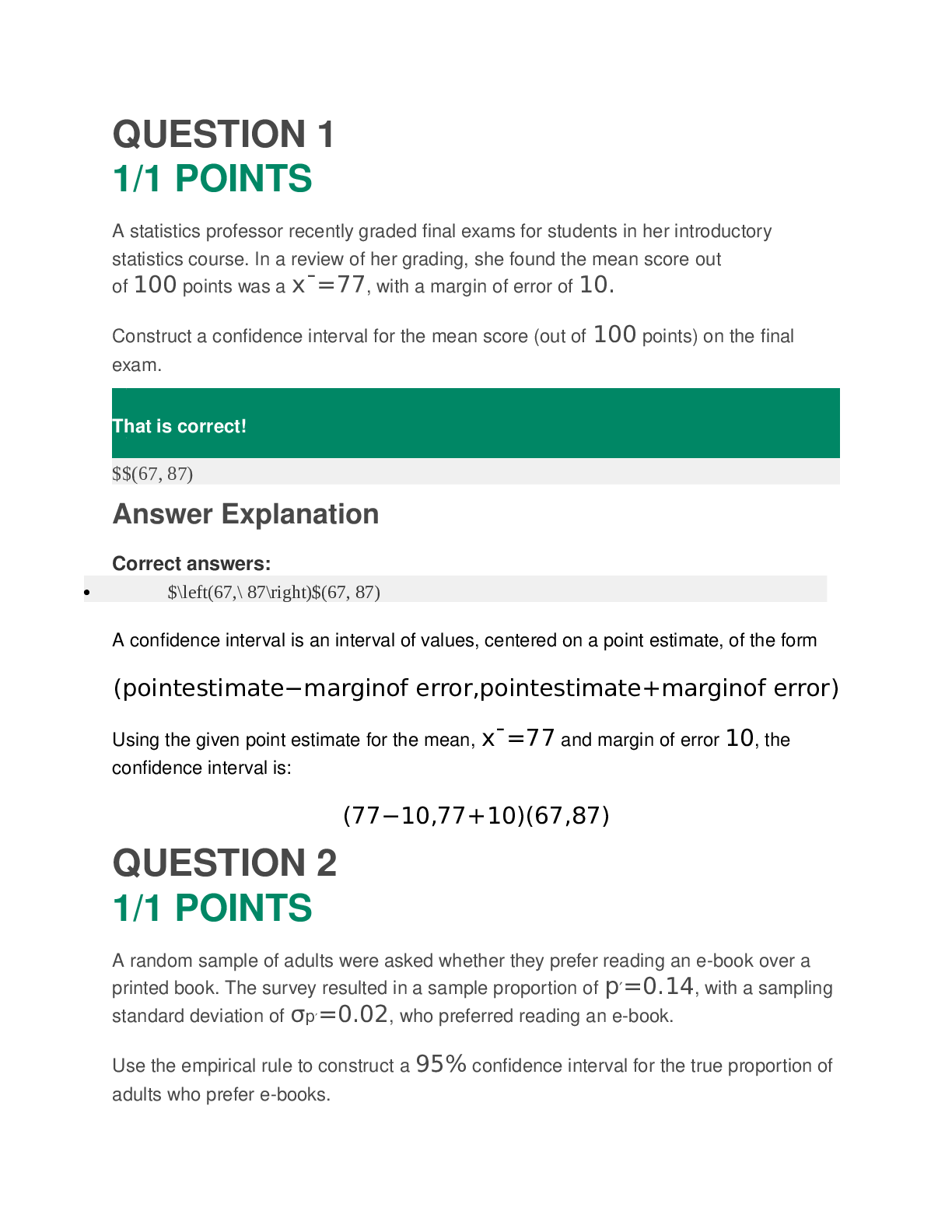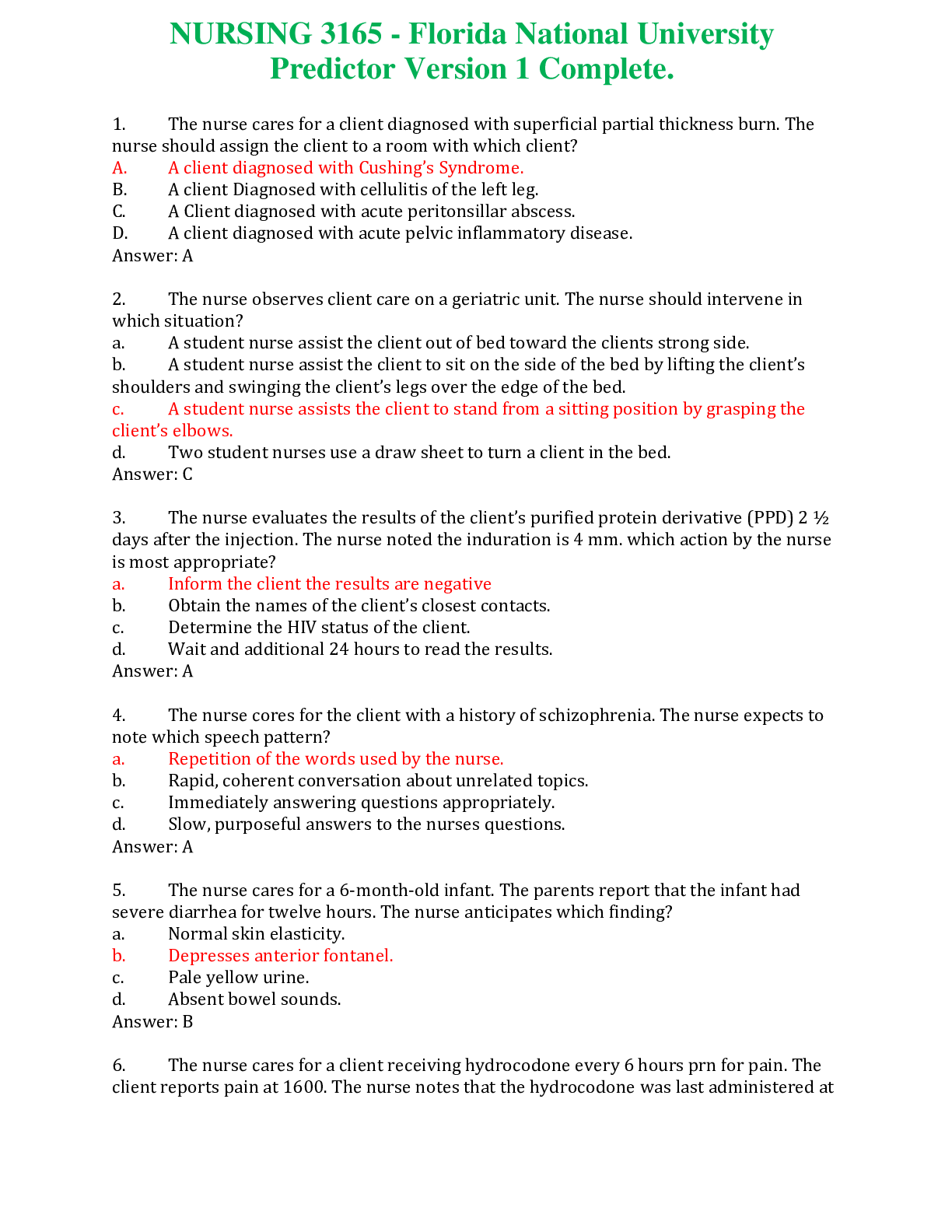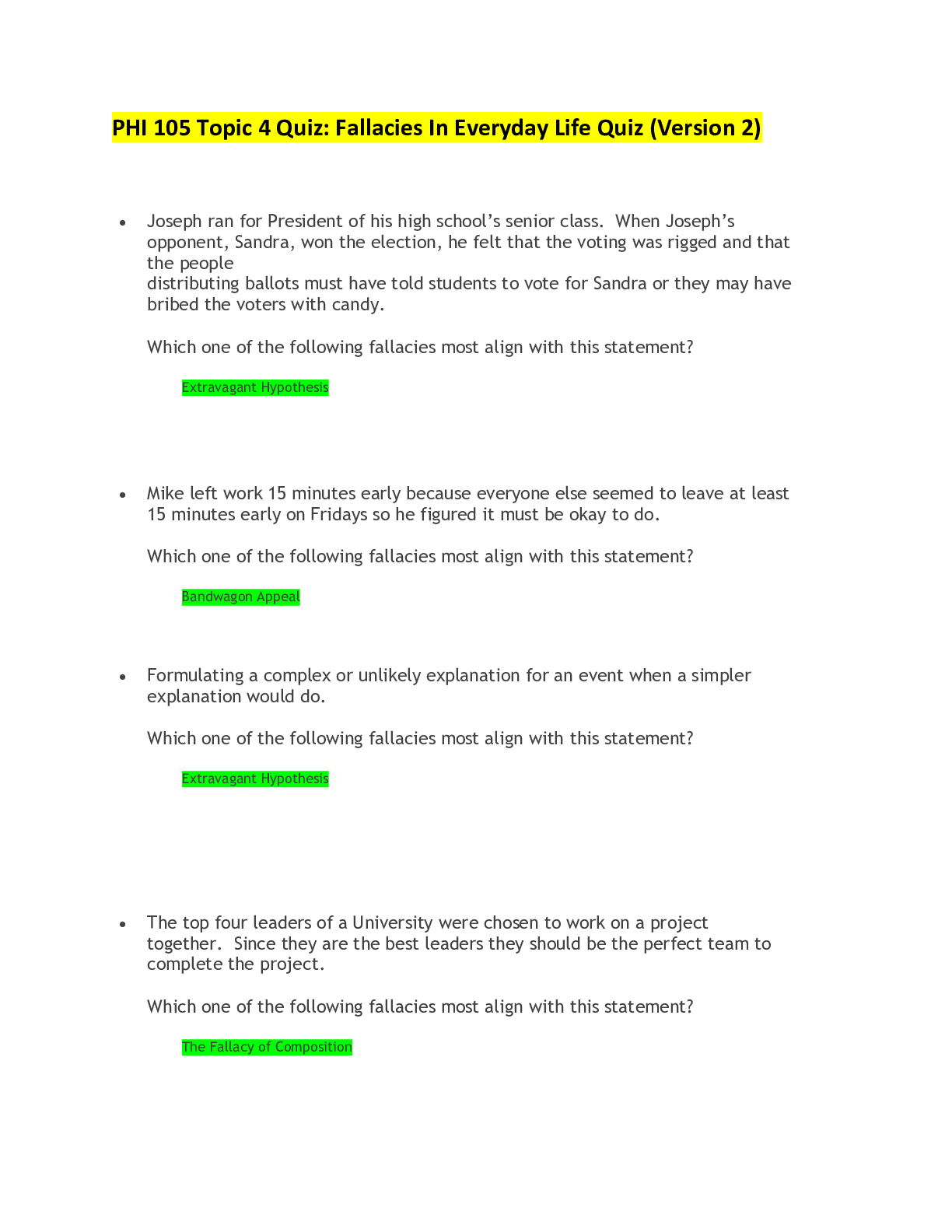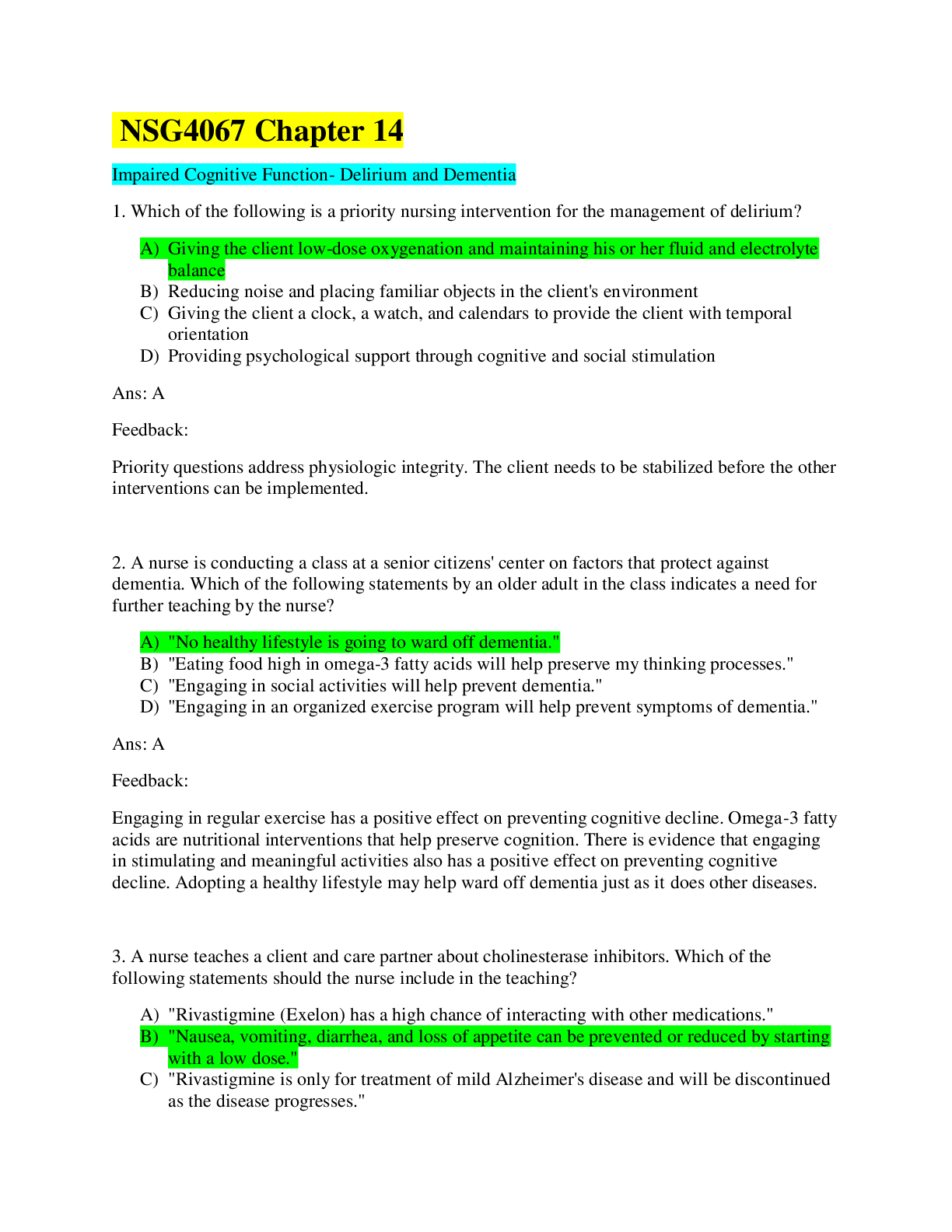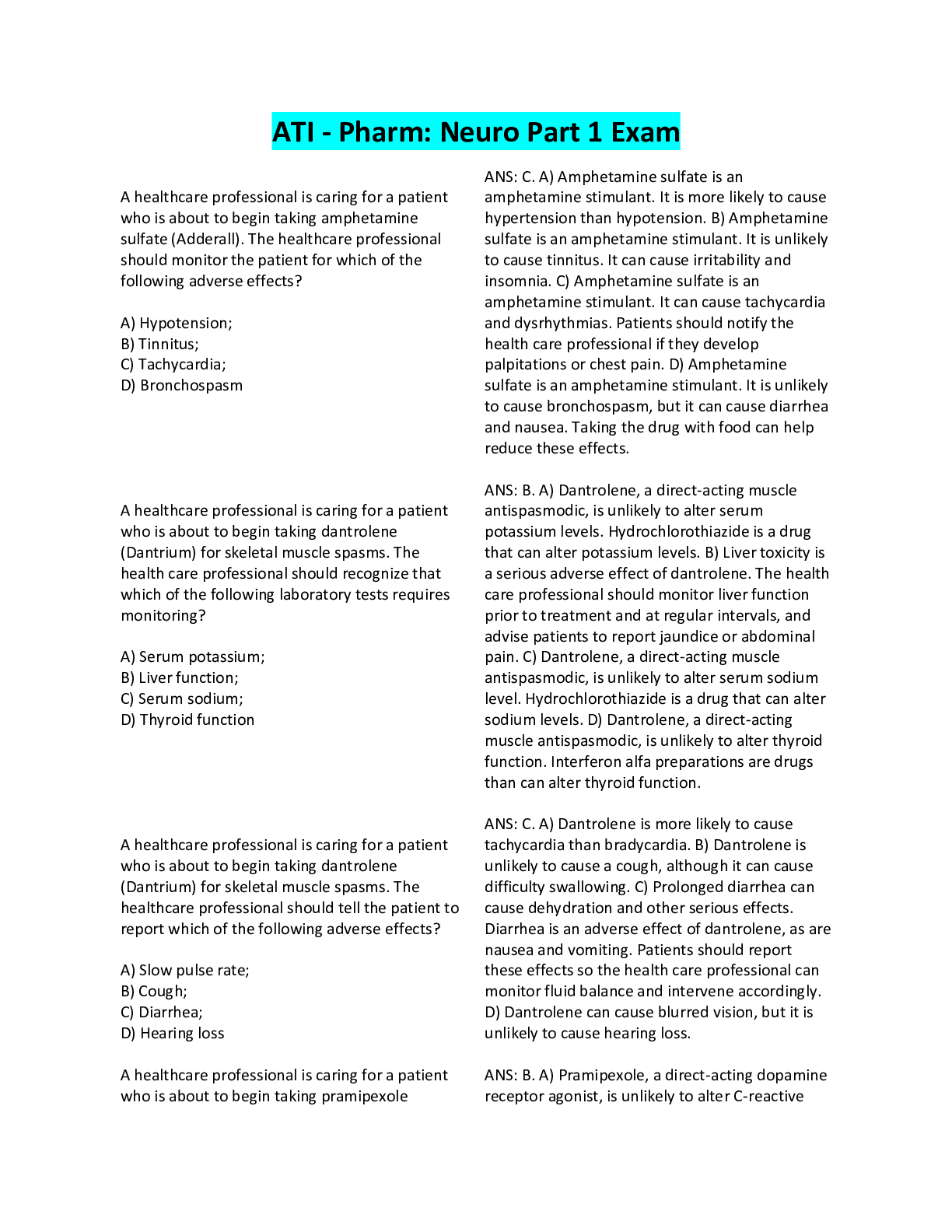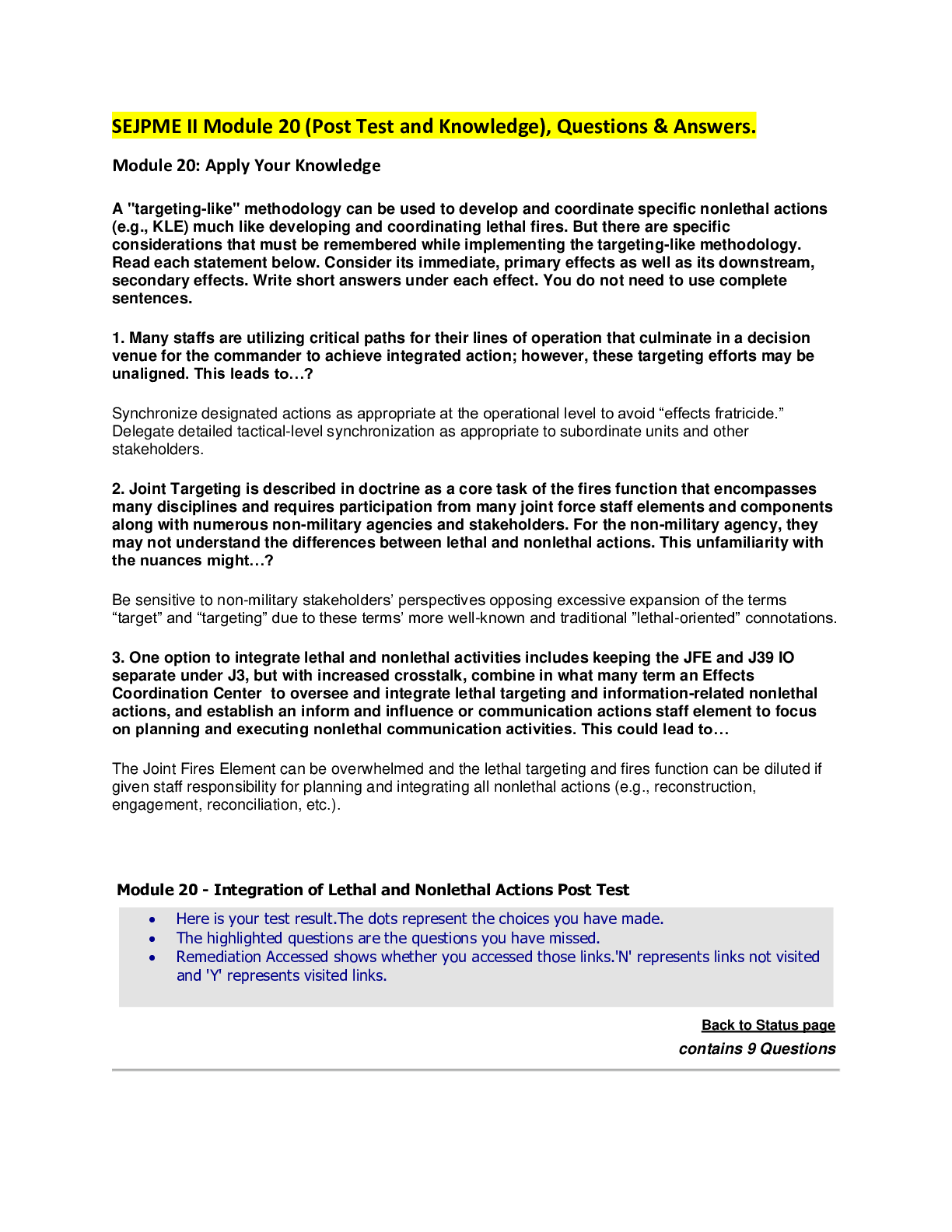*NURSING > QUESTIONS & ANSWERS > Pediatric Success A Q 26A Review Applying. Critical Chapter 3: Issues Related to Pediatric. Question (All)
Pediatric Success A Q 26A Review Applying. Critical Chapter 3: Issues Related to Pediatric. Questions & Answers.
Document Content and Description Below
QUESTIONS 1. The mother of a 3-week-old tells the nurse she is residing in a homeless shelter and is concerned about his mild cough, poor appetite, low-grade fever, weight loss, and fussiness over ... the last 2 weeks. Which nursing intervention would be the nurse’s highest priority? 1. Weigh the baby to have an accurate weight using standard precautions. 2. Reassure the mother that the baby may only have a cold, which can last a few weeks. 3. Immediately initiate droplet face-mask precautions, and isolate the infant. 4. Take a rectal temperature while completing the assessment using standard precautions. 2. Which would be the priority nursing intervention for a newly admitted child with Kawasaki disease? 1. Continuous cardiovascular and oxygen-saturation monitoring. 2. Vital signs every 4 hours until stable. 3. Strict intake and output monitoring hourly. 4. Begin aspirin therapy after fever has resolved. 3. Which clinical assessment of a neonate with bacterial meningitis would warrant immediate intervention? 1. Irritability. 2. Rectal temperature of 100.6°F (38.1°C). 3. Quieter than usual. 4. Respiratory rate of 24 breaths per minute. 4. An 18-month-old is discharged from the hospital after having a febrile seizure secondary to exanthem subitum (roseola). On discharge, the mother asks the nurse if her 6-year-old twins will get sick. Which teaching about the transmission of roseola would be most accurate? 1. The child should be isolated in the home until the vesicles have dried. 2. The child does not need to be isolated from the older siblings. 3. Administer acetaminophen to the older siblings to prevent seizures. 4. Monitor older children for seizure development. 5. The mother of a child diagnosed with erythema infectiosum (fifth disease). is crying, and says, “I am afraid. Will my unborn baby die? I have a planned cesarean section next week.” Which statement would be the most therapeutic response? 1. “Let me get the physician to come and talk with you.” 2. “I understand. I would be afraid, too.” 3. “Would you like me to call your obstetrician to have you seen as soon as possible?” 4. “I understand you are afraid. Can we can talk about your concerns?” 6. Which would be the priority intervention for a child suspected of having varicella (chickenpox)? 1. Contact precautions. 2. Contact and droplet respiratory precautions. 3. Droplet respiratory precautions. 4. Universal precautions and standard precautions. 7. Which would be the priority intervention for a child diagnosed with chickenpox (varicella) who was prescribed diphenhydramine (Benadryl) for itching? 1. Give a warm bath with mild soap before lotion application. 2. Avoid Caladryl lotion while taking diphenhydramine (Benadryl). 3. Apply Caladryl lotion generously to decrease itching. 4. Give a cool shower with mild soap to decrease itching. ANSWERS AND RATIONALES The correct answer number and rationale for why it is the correct answer are given in boldface blue type. Rationales for why the other possible answer options are incorrect also are given, but they are not in boldface type. 1. 1. Weighing the child would be important but not the priority when concerned about an infectious cause. Initiating droplet precautions to prevent infecting others would be a priority, then weighing the infant. 2. The symptoms are not suggestive of a cold but something more serious. Infants do not usually lose weight, nor are they irritable with a simple cold. 3. Children with tuberculosis may have a history of living in a crowded home or could be homeless. Other symptoms may include a cough, cold symptoms, low-grade fever, irritability, poor appetite, and exposure to a person with tuberculosis. Initiation of droplet precautions and isolation of the infant would be warranted in this situation. 4. Taking the infant’s temperature is important, but initiating droplet precautions would be the priority. TEST-TAKING HINT: The test taker should be highly suspicious of tuberculosis given the family and patient history. Health-care personnel need to be vigilant to contain and prevent further spread of communicable diseases. This child could have meningitis, which would also require isolation and respiratory precautions. 2. 1. Cardiovascular manifestations of Kawasaki disease are the major complications in pediatric patients. Continuous cardiac monitoring is required to alert the nurse of any cardiovascular complications. Decreased oxygen saturation and respiratory changes have been shown to be early indicators of potential complications. 2. Vital signs would be taken every 1 to 2 hours until stable on a new admission with Kawasaki disease. 3. Strict intake and output is very important, but because the major complications with Kawasaki disease are cardiovascular, continuous cardiac monitoring is the priority. 4. High-dose aspirin therapy is begun and continued until the child has been afebrile for 48 to 72 hours; then the child is placed on low-dose therapy. TEST-TAKING HINT: The test taker should understand that cardiovascular manifestations of Kawasaki disease are the major complications in pediatric patients. 3. 1. With the diagnosis of suspected bacterial meningitis, the neonate is expected to be irritable, which frequently accompanies increased intracranial pressure. 2. A rectal temperature of 38.1°C or 100.6°F indicates a low-grade fever and is not as concerning as the slower-than-normal respiratory rate of 24. 3. The fact the infant is quieter than normal is in response to the slow respiratory rate and sepsis the neonate is experiencing. 4. A normal neonate’s respiratory rate is 30 to 60 breaths per minute. Neonates’ respiratory systems are immature, and the rate may initially double in response to illness. If no immediate interventions are begun when there is respiratory distress, a neonate’s respiratory rate will slow down, develop worsening respiratory distress, and, eventually, respiratory arrest. Neonates with slower or faster respiratory rates are true emergency cases; they require identification of the cause of distress. TEST-TAKING HINT: The test taker needs to know the normal range of vital signs and when to be concerned to help answer the question. 4. 1. The rash is pink and maculopapular, not vesicular. The incubation period is 5 to 15 days and more commonly seen in children 6 months to 3 years of age. Isolating the siblings is not necessary. 2. Roseola transmission is unknown and more commonly seen in children 6 months to 3 years of age, so siblings do not need to be isolated. 3. Because the siblings have no history of seizures, it is not necessary to administer acetaminophen to prevent seizures. 4. Febrile seizures are not usually seen in children older than 6 years, and because they have no history of seizures, it is not necessary to monitor them for seizure development. TEST-TAKING HINT: The test taker should understand that exanthema subitum (roseola) transmission is unknown, and usually limited to children 6 months to 3 years of age; isolation is not necessary. [Show More]
Last updated: 1 year ago
Preview 1 out of 24 pages
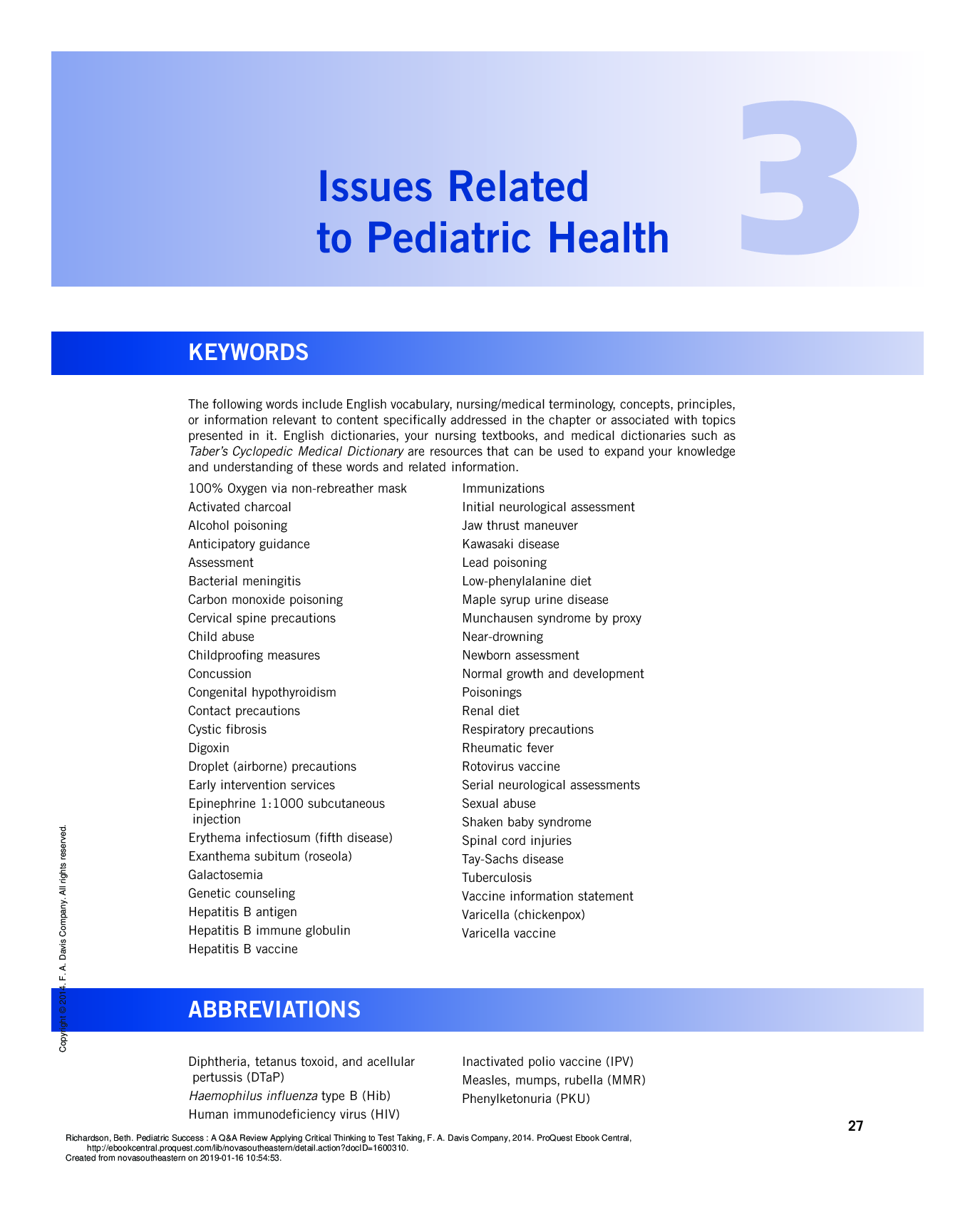
Buy this document to get the full access instantly
Instant Download Access after purchase
Add to cartInstant download
We Accept:

Reviews( 0 )
$9.00
Document information
Connected school, study & course
About the document
Uploaded On
Apr 14, 2021
Number of pages
24
Written in
Additional information
This document has been written for:
Uploaded
Apr 14, 2021
Downloads
0
Views
33


